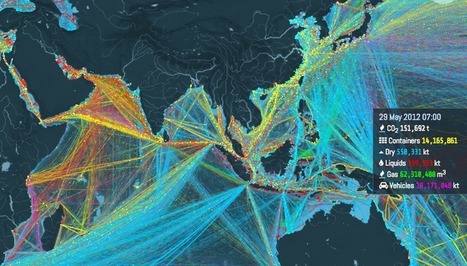"Ships carry 11 billion tons of goods each year. This interactive map shows where they all go. About 11 billion tons of stuff gets carried around the world every year by large ships. Clothes, flat-screen TVs, grain, cars, oil — transporting these goods from port to port is what makes the global economy go 'round. And now there's a great way to visualize this entire process, through this stunning interactive map from the UCL Energy Institute."

|
Scooped by Skuuppilehdet |





 Your new post is loading...
Your new post is loading...








